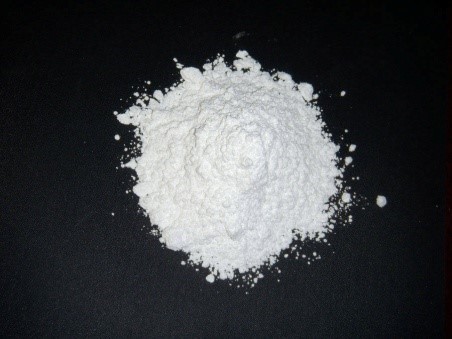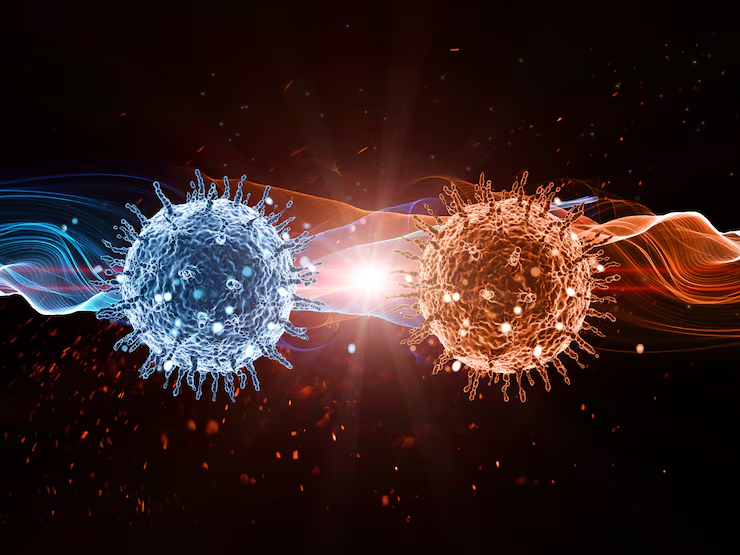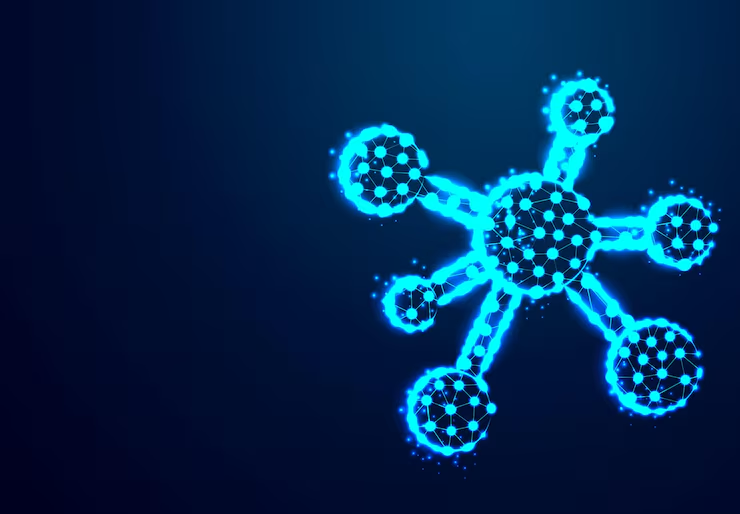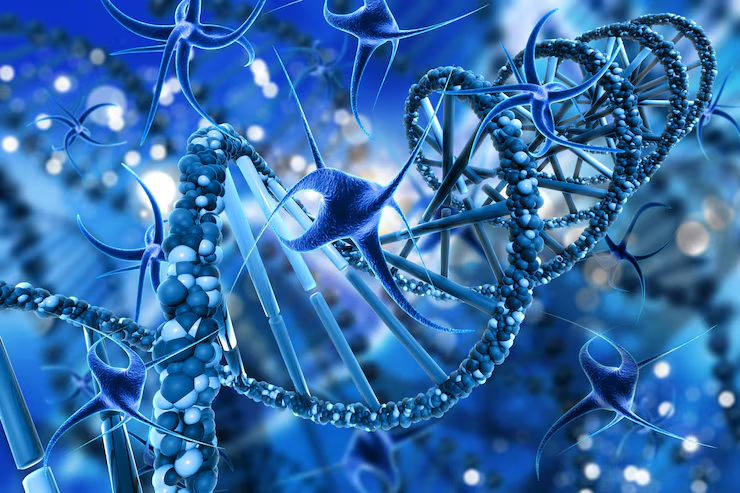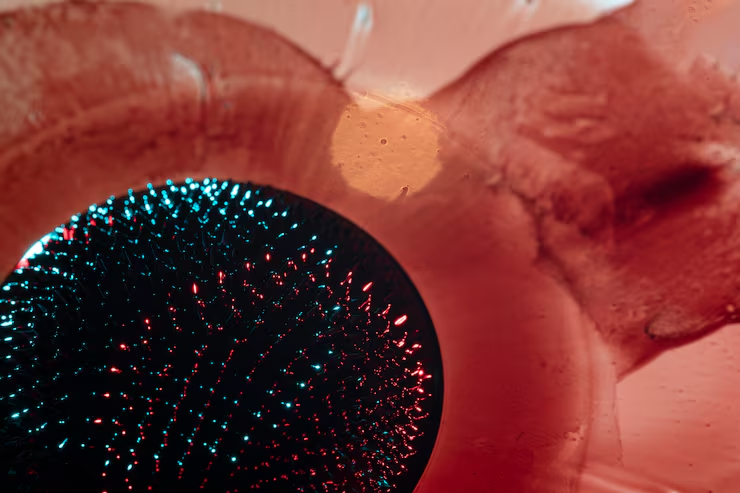Ferrites and orthoferrites are technologically important materials due to their magnetic, electric, and luminescence properties. At the nanoscale, these materials exhibit significantly enhanced and improved properties. However, synthesizing nano-ferrites and nano-orthoferrites with precise control over size, shape, crystallinity, and composition remains challenging. There are also challenges in understanding their properties at the nanoscale and leveraging them for practical applications. This blog post discusses some key challenges and future research prospects in the synthesis and utilization of these nanostructured materials.
Synthesis Challenges
Precise control over particle size, shape, and size distribution is one of the key challenges in ferrite nanoparticle synthesis. Conventional solid-state and ceramic methods produce ferrite particles in the micrometer range with inhomogeneous and broad size distributions, making it difficult to achieve uniform properties.
While wet chemical methods allow nanoscale synthesis, achieving precise control over particle dimensions, morphologies, and narrow dispersion remains difficult due to limitations such as unpredictable nucleation and growth kinetics. Developing robust synthetic techniques that allow the manufacturing of ferrite nanoparticles with tunable sizes, uniform shapes, and minimal polydispersity index is important for enabling technological applications that require reproducibility and consistency at the nanoscale.
Phase purity:
Phase purity is crucial for ferrites to exhibit designed magnetic properties. However, achieving single-phase formation during crystallization poses a challenge. Secondary phases and impurities commonly form during high-temperature solid-state reactions due to variables like off-stoichiometric compositions and excess/deficient reactants.
Even trace amounts of secondary phases can significantly affect properties. Optimization of reaction parameters such as temperature, duration, precursor identities, and stoichiometric ratios is critical but complex, as the ferrite phase diagram involves multiple elements. Developing robust protocols to screen these parameters systematically and produce phase-pure ferrites with reproducible compositions remains an active area of research.
Doping/substitution challenges: Incorporating dopants/substitutions homogeneously into the crystal lattice to modulate properties is difficult at the nanoscale using conventional methods.
Anisotropic shape control:
Controlling the anisotropic shape of ferrite nanoparticles beyond simple spheres is important for exploiting shape-dependent properties but remains difficult to achieve. Wet chemical synthesis typically yields near-spherical particles due to the tendencies of nucleation and growth via minimizing surface energies.
Producing well-defined cubic, hexagonal, or rod morphologies requires overcoming these energetic preferences through precisely tuned external factors such as capping agent structures, pH, temperature gradients, electromagnetic fields, and reactant concentrations. However, identifying the optimal combination of multiple synthesis parameters to reliably produce monodisperse particles of targeted anisotropic geometries has proven challenging. Further fundamental research is needed to better understand anisotropic growth mechanisms and enable scalable anisotropic shape control.
Scaling-up:
While wet chemical synthesis allows for good control over size, shape, and crystallinity at the laboratory scale, developing scalable protocols to produce ferrite nanoparticles in high volumes required for industrial applications remains a major challenge.
Conventional batch reactors have limitations in terms of yield, uniformity, reproducibility, and processing time. Continued efforts are underway to engineer flow-based systems, improve precursor delivery methods, and utilize advanced microfluidics and continuous processing techniques to translate finely optimized lab-scale routes toward mass manufacturing capabilities.
Optimizing reactor hydrodynamics, heat, and mass transfer properties over larger scales while maintaining stringent control over nuclei and growth dynamics is non-trivial. Devising innovative scale-up strategies remains crucial for the applied commercialization of ferrite nanomaterials.
Property Understanding Challenges
Relating macro-performance to nanostructure:
Establishing well-defined structure-property relationships is critical for rational design and modeling of advanced ferrite-based devices but poses significant challenges. Measured bulk performance results from the collective behavior of trillions of interacting nanoscale building blocks, each with its own subtly varying attributes introduced during synthesis and processing.
Isolating the influence of individual parameters like size, morphology, defects, strain, cation distribution, etc. demands approaches like single particle characterization. Correlating macroscale response directly to nanoscale morphology still requires developing sensitive, high-resolution analytical tools and multi-scale modeling frameworks. Deeper mechanistic insights linking precise nanostructure tunability achieved through synthesis to tailored macroscopic functionality are important to optimize materials for diverse applications.
Surface effects:
In nanomaterials, surface atoms can represent a significant fraction of total atoms, making surface and interface effects profoundly influential on properties. In ferrite nanoparticles, surface morphology, coordination, bonding configurations, defects, and termination all impact underlying spin, charge, and energy landscapes in non-trivial ways compared to bulk. However, unraveling surface-driven contributions poses major challenges due to their extreme sensitivity.
Advanced characterization techniques coupled with first-principles modeling are enabling a better understanding of surface anisotropy, spin disorder, bandgap alterations, and surface exchange interactions.
Continued efforts are needed to elucidate interface structure-property links and develop synthesis approaches to manipulate surface facets, termination, and interface engineering with precision for optimally designing ferrite nanomaterials.
Property anisotropy:
Beyond just controlling nanoparticle shape, synthesizing highly ordered superstructures with well-defined anisotropic orientations is important for exploring novel phenomena. The ability to precisely engineer long-range ordering, alignment, and registry of anisotropic ferrite nanostructures could unlock unprecedented directionally dependent magnetic, electric, or photonic characteristics.
However, assembling high-aspect ratio nanoparticles with oriented orientations over macroscopic domains during fabrication remains enormously challenging. Continued efforts in synthesis techniques like field-assisted assembly, Langmuir-Blodgett deposition, and template-guided growth may enable systematic studies on how orientation and long-range textures impact anisotropic properties. Elucidating orientation-property correlations could uncover new structure-functional paradigms.
Device integration challenges:
While ferrite nanomaterials exhibit highly tunable properties, leveraging them to develop next-generation technologies requires overcoming significant integration obstacles. Developing scalable, precise techniques to organize ferrite nanoparticles into functional thin films, patterns, heterojunctions, and composites while preventing aggregation, maintaining crystallinity and surface termination presents major materials engineering challenges.
Further issues arise from achieving robust, ohmic electrical contacts, optimization of device architectures, and addressing reliability concerns over repeated cycling/switching. Determining optimal processing parameters to minimize property degradation during scale-up involves complex trade-offs. Continued multidisciplinary efforts are needed to translate advances in nanoscale ferrites into practical, real-world devices with preserved nano-enabled performance.
Future Prospects and Research Directions
Improved control over synthesis:
Developing new wet chemical, hydrothermal/solvothermal, and sonochemical methods could better produce phase-pure particles with tunable size, shape, and composition. The use of capping/structure-directing agents, functionalized surfaces, and kinetic/thermodynamic control will be important.
In-situ characterization:
Elucidating crucial structure-property links requires tracking the intricate dynamical processes underlying nanoparticle crystallization with angstrom-level precision. However, conventional ex-situ characterization post-synthesis provides only a snapshot of the final state.
In-situ techniques enabling observation of nucleation, phase transformations, and interface evolution during active wet chemical reactions at scales close to real-time have the potential to revolutionize the fundamental understanding of synthesis-structure correlations. Continued development of in-situ microfluidic cell technologies compatible with advanced probes like liquid-cell TEM, operando XRD, and IR/Raman spectroscopy holds promise to directly visualize transient reaction intermediates and surface configurations. This may enable the rational design of scalable protocols for targeted nanostructure fabrication.
Property-structure modeling:
To accelerate materials discovery and design, computational modeling provides a powerful complementary approach to experiments. However, accurately predicting the properties of complex ferrite nano first principles poses major challenges due to their numerous degrees of configurational freedom and size-dependent effects. Integrating higher-level electronic structure methods with statistical mechanical frameworks capable of handling truly representative nanoparticle ensembles is crucial.
Continued methodological developments that enable rapidly mapping trends across compositions, morphologies, def, etc., and interfaces while accounting for realistic structural/compositional heterogeneity can help guide resource-intensive physical characterization. With sufficient validation, multi-scale property-structure simulations may eventually offer a virtual screening platform to pre-optimize ferrite nanocrystal synthesis for target specifications.
Novel doping/substitutions:
While extensive work has focused on conventional dopants in ferrites, exploring entirely new dopant elements holds promise for transforming their properties in unprecedented ways. Systematically mapping vast compositional landscapes involving transition metals, rare earths, and non-metals may unveil exotic phases displaying emergent phenomena such as ashigh-temperaturee ferromagnetism, spin-polarized electronic states, and quantum spin frustrated ground states.
However, synthesizing ferrites with controlled doping or substitution patterns while avoiding secondary phases or deficit defects is synthetically challenging. Overcoming these difficulties through rational solute design and optimized synthesis-processing pathways could lead to unforeseen device functionalities. Extending ferrite family frontiers thus remains a thriving area of research.
Developing anisotropic structures:
Fully exploiting ferrites at the nano-scale requires orienting their structural and magnetic anisotropy. Template-guided crystallization and epitaxial deposition offer routes to intricately patterned ferrite architectures with exquisite control over NP orientation, long-range order, and superb crystallinity.
However, synthesizing high-quality epitaxial ferrite films and complex 3D superlattices poses major challenges, from optimizing thermodynamic driving forces and interfacial energies to achieving defect-free coherent interfaces and precise dimensional control across multiple lattice mismatches. Continued developments in synthetic techniques that constrain heterogeneous nucleation and oriented attachment, such as scaffold engineering, field-directed assemblies, and interface engineering hold promise to realize wholly anisotropic ferrite phases and unlock new structure-property paradigms.
Integrating into devices:
Significant progress can be made by incorporating nanoferrites/orthoferrites as active components in spintronic devices, lithium-ion batteries, catalytic systems, biomedical imaging agents,s and more. Demonstrating technology impact potential will propel the field forward.
Conclusion:
Overall, a multidisciplinary approach merging material synthesis know-how with in-situ probing, modeling, and application testing holds promise to address current challenges and advance the utilization of nanostructured ferrites and orthoferrites in future technologies. With continued research efforts, their full properties and potential can be unlocked.

